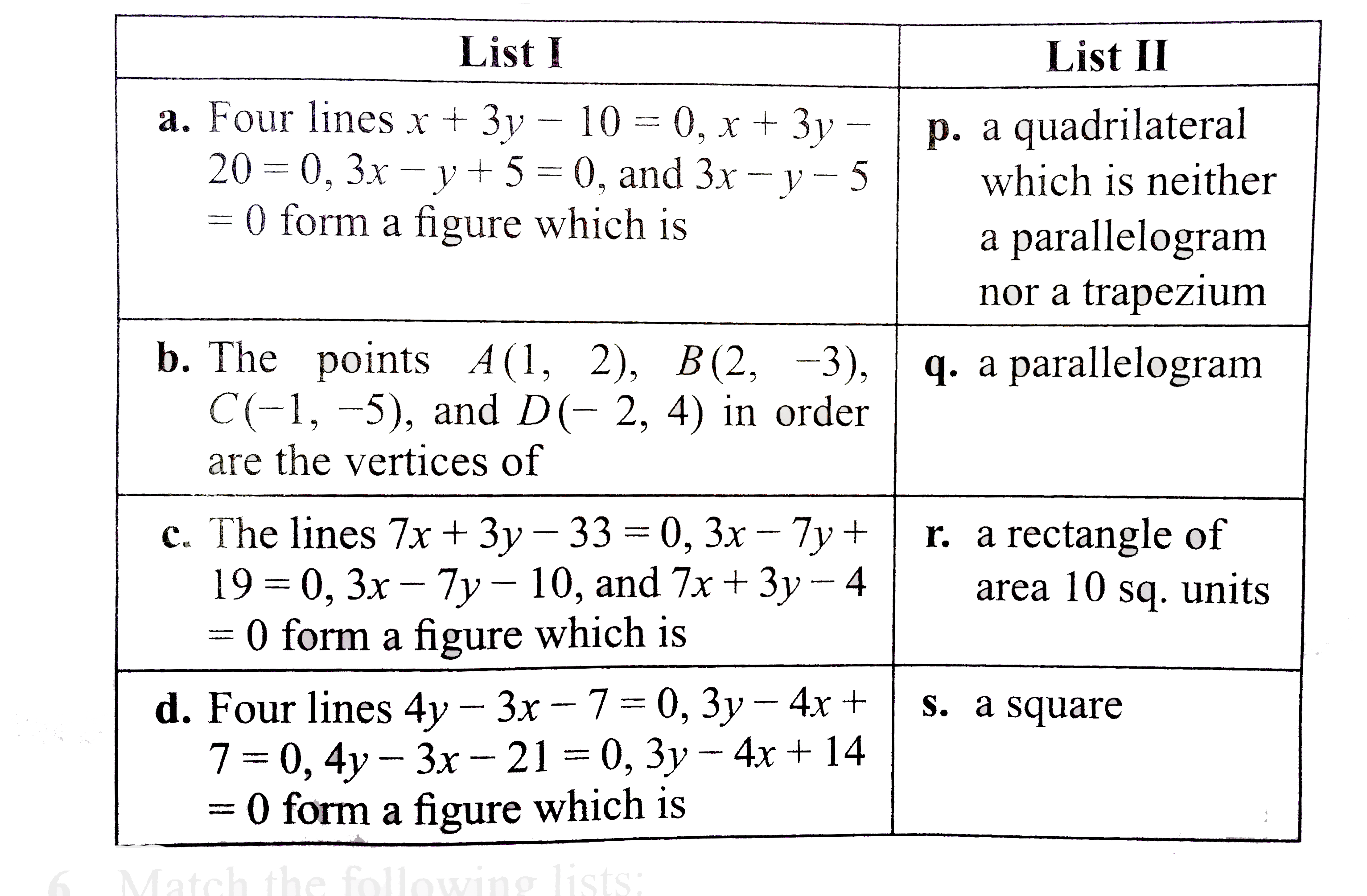The equation of the lines passing through the point and at a distance from the origin is (a) =0 (b) (c) (d) Solution in Bengali
The correct Answer is:A, C
The equations of lines passing through (1,0) are given by y=m(x-1). Its distance from the origin is . Hence,
Hence, the lines are
Topper's Solved these Questions
- BOOK - CENGAGE PUBLICATIONCHAPTER - STRAIGHT LINESEXERCISE - EXERCISE (LINKED COMPREHENSION TYPE)27videos
STRAIGHT LINES
- BOOK - CENGAGE PUBLICATIONCHAPTER - STRAIGHT LINESEXERCISE - EXERCISE (MATRIX MATCH TYPE)8videos
STRAIGHT LINES
- BOOK - CENGAGE PUBLICATIONCHAPTER - STRAIGHT LINESEXERCISE - EXERCISE (SINGLE CORRECT ANSWER TYPE)82videos
STRAIGHT LINES
- BOOK - CENGAGE PUBLICATIONCHAPTER - STRAIGHT LINEEXERCISE - Multiple Correct Answers Type8videos
STRAIGHT LINE
- BOOK - CENGAGE PUBLICATIONCHAPTER - THEORY OF EQUATIONSEXERCISE - JEE ADVANCED (Numerical Value Type )1videos
THEORY OF EQUATIONS
Similar Questions
Let l be the line belonging to the family of straight lines (a+2b)x+(a−3b)y+a−8b=0,a,b∈R, which is farthest from the point (2,2), then area enclosed by the line L and the coordinate axes is
03:46View SolutionMatch the following lists:
 04:34View Solution
04:34View SolutionFind the equations of the diagonals of the square formed by the lines x=o,y=0,x=1andy=1.
02:24View SolutionThe point P(α,α+1) will lie inside the triangle whose vertices are A(0,3),B(−2,0) and C(6,1) if
05:59View SolutionThe number of distinct real roots of x4−4x3+12x2+x−1=0is_____.
06:16View SolutionLet P=(−1,0),Q=(0,0)andR=(3,3√3) be three points. The equation of the bisector of the angle PQR (1) √3x+y=0 (2) x+√32y=0 (3) √32x+y=0 (4) x+√3y=0
07:38View Solutionsinx+cosx=y2−y+a has no value of x for any value of y if a belongs to (0,√3) (b) (−√3,0) (−∞,−√3) (d) (√3,∞)
01:31View SolutionThe equation of the lines passing through the point (1,0) and at a distance √32 from the origin is √3+y−√3 =0 x+√3y−√3=0 √3x−y−√3=0 x−√3y−√3=0
08:08View SolutionProve that the lines √3x+y=0, √3y+x=0, √3x+y=1 and √3y+x=1 form a rhombus.
08:08View SolutionProve that the diagonals of the parallelogram formed by the lines √3x+y=0,√3y+x=0,√3x+y=1and√3y+x=1 are at right angles.
03:13View SolutionAn equilateral triangle whose two vertices are (−2,0)and(2,0) and which lies in the first and second quadrants only is circumscribed by a circle whose equation is : (B) √3x2+√3y2−4x−4√3y=0 (C) √3x2+√3y2−4y+4√3y=0 (D) √3x2+√3y2−4y−4√3=0
18:23View Solutionहल कीजिए: √2x−√3y=0 और √3x−√8y=0
06:48View Solutionसिद्ध कीजिए की रेखाएं √3x+y=0,√3y+x=0,√3x+y=1 तथा √3y+x=1 एक समांतर चतुर्भुज की रचना करती है|
05:36View Solutionसाबित करें की रेखाओं √3x+y=0,√3y+x=0,√3x+y=1 तथा √3y+x=1 से बने समान्तर चतुर्भुज के विकर्ण परस्पर समकोण पर हैं।
06:45View SolutionSolution for the equations √3x+√5y=0 and √7x+√11y=0 is…….
18:23View SolutionThe quadrilateral formed by the lines √3x+y=0,√3y+x=0,√3x+y=1,√3y+x=1 is
04:02View Solution

